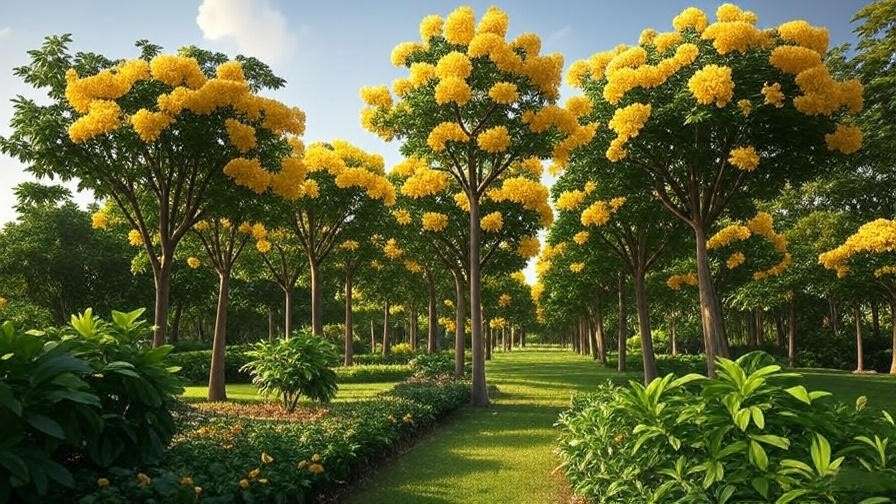Picture your garden bathed in golden sunlight, with vibrant trees with yellow flowers stealing the show. These stunning specimens don’t just add a pop of color—they transform your outdoor space into a cheerful, pollinator-friendly haven. Whether you’re a seasoned gardener or a beginner, choosing the right yellow-flowering tree can elevate your landscape while solving common gardening challenges, like creating shade, attracting wildlife, or adding seasonal flair. In this comprehensive guide, we’ll explore the top 10 trees with yellow flowers, share expert care tips, and provide design ideas to make your garden thrive. Backed by years of horticultural expertise, this article will help you select and nurture the perfect tree for your space. 🌞
Why Choose Trees with Yellow Flowers? 🌸
Yellow-flowering trees are a gardener’s dream, blending aesthetic appeal with practical benefits. Their bright blooms create a welcoming atmosphere, making your garden feel alive and vibrant. These trees also attract pollinators like bees, butterflies, and hummingbirds, supporting local ecosystems. 🐝 Plus, they offer seasonal interest, with many blooming in spring or summer, and some providing stunning fall foliage or evergreen charm.
From small urban yards to sprawling rural landscapes, yellow-flowering trees are versatile. They can serve as focal points, shade providers, or privacy screens, all while requiring varying levels of maintenance to suit your lifestyle. By choosing the right tree, you’re investing in a low-maintenance, high-impact addition that enhances both curb appeal and emotional well-being.
Top 10 Trees with Yellow Flowers for Your Garden 🌿
Below, we’ve curated a list of the 10 best trees with yellow flowers, selected for their beauty, hardiness, and adaptability. Each tree comes with detailed care tips to ensure success in your garden.
1. Golden Chain Tree (Laburnum × watereri)
This compact tree is a showstopper, with cascading clusters of bright yellow flowers resembling wisteria. Blooming in late spring, it’s perfect for small gardens or as an ornamental centerpiece.
- Key Features: Grows 15–25 feet tall, prefers full sun, and thrives in USDA zones 5–7.
- Care Tips: Plant in well-drained soil with moderate watering. Prune after flowering to maintain shape. Note: Seeds are toxic, so keep away from pets and children.
- Best For: Creating a dramatic focal point in small spaces.
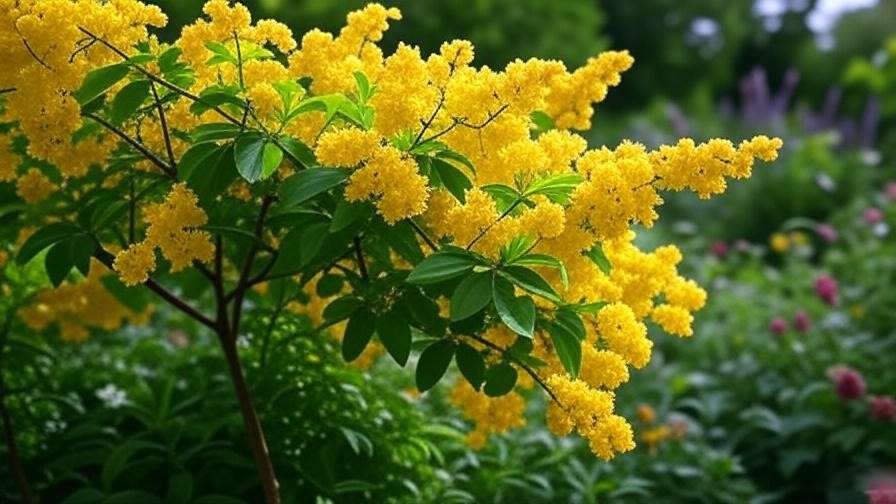
2. Yellow Buckeye (Aesculus flava)
A native North American tree, the Yellow Buckeye boasts upright clusters of yellow flowers in spring, followed by striking fall foliage. It’s ideal for larger landscapes.
- Key Features: Reaches 60–75 feet, shade-tolerant, USDA zones 4–8.
- Care Tips: Thrives in loamy, well-drained soil. Water regularly during establishment. Watch for leaf scorch in hot climates.
- Best For: Shady yards and wildlife-friendly gardens.

3. Tabebuia (Tabebuia spp.)
Known as the “trumpet tree,” Tabebuia lights up warm climates with vibrant yellow blooms. It’s a tropical favorite for its drought tolerance and long bloom season.
- Key Features: Grows 20–30 feet, USDA zones 9–11, deciduous or evergreen depending on species.
- Care Tips: Plant in full sun with well-drained soil. Fertilize sparingly and protect from frost.
- Best For: Coastal gardens or sunny, warm regions.
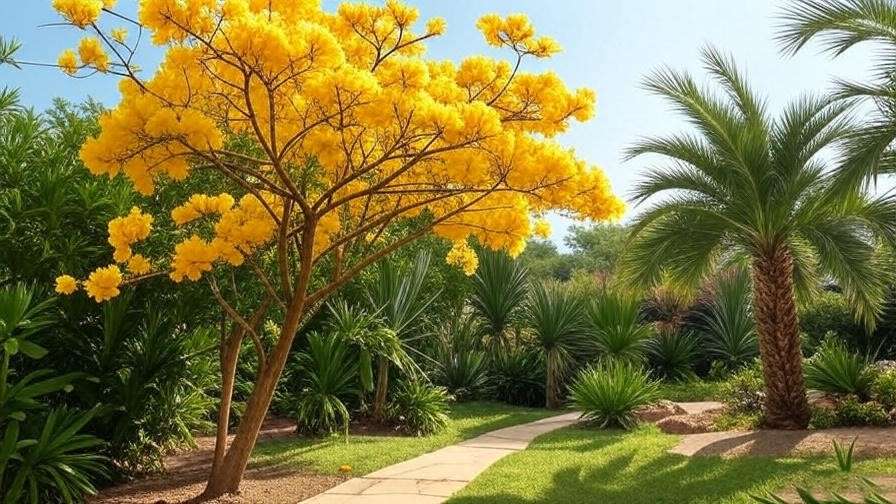
4. Cornelian Cherry (Cornus mas)
This small tree or large shrub offers early spring yellow flowers and edible red fruit in late summer. It’s a cold-hardy option for compact spaces.
- Key Features: Grows 15–20 feet, USDA zones 4–8, adaptable to various soils.
- Care Tips: Prune lightly to encourage blooms. Water moderately and harvest fruit for jams or fresh eating.
- Best For: Edible landscapes and small yards.
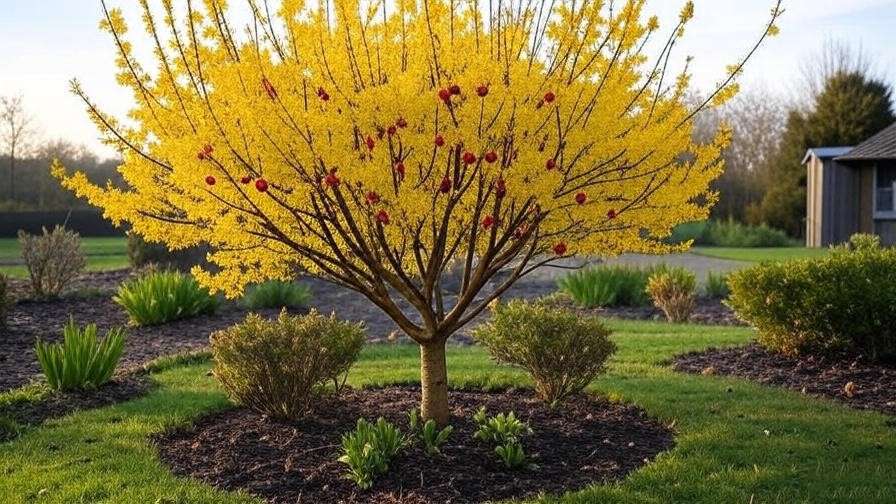
5. Palo Verde (Parkinsonia spp.)
A desert gem, Palo Verde features delicate yellow flowers and unique green bark, making it a standout in arid landscapes.
- Key Features: Grows 20–30 feet, USDA zones 8–11, highly drought-tolerant.
- Care Tips: Plant in full sun with sandy, well-drained soil. Minimal watering once established.
- Best For: Xeriscaping and low-water gardens.
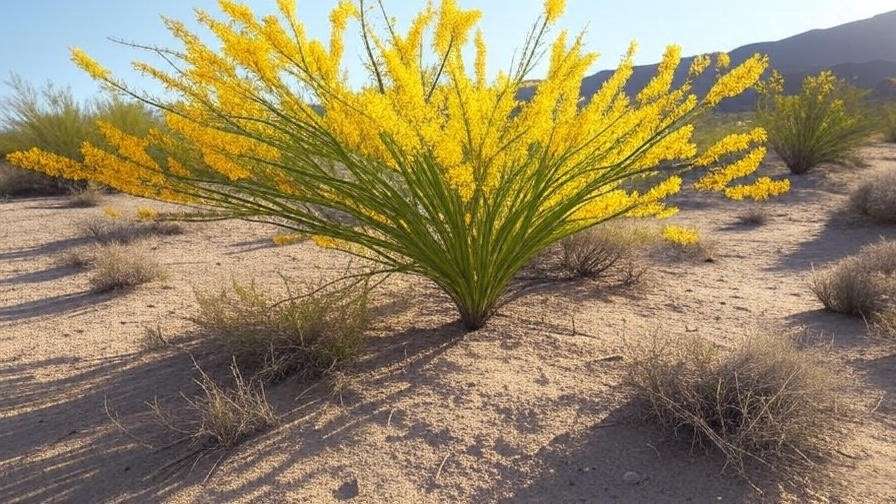
6. Golden Trumpet Tree (Tabebuia chrysotricha)
This tropical beauty delivers bold yellow blooms in spring, creating a stunning display in warm climates.
- Key Features: Grows 25–35 feet, USDA zones 10–11, fast-growing.
- Care Tips: Protect from frost and stake young trees. Use well-drained soil and fertilize during growth.
- Best For: Statement trees in tropical or subtropical gardens.

7. Mimosa Tree (Albizia julibrissin)
With fluffy yellow-pink blooms and fern-like foliage, the Mimosa tree is a fast-growing shade provider, though it requires caution due to its invasive potential.
- Key Features: Grows 20–40 feet, USDA zones 6–9, prefers full sun.
- Care Tips: Prune regularly to control spread. Plant in well-drained soil and monitor for invasiveness.
- Best For: Large gardens with containment strategies.
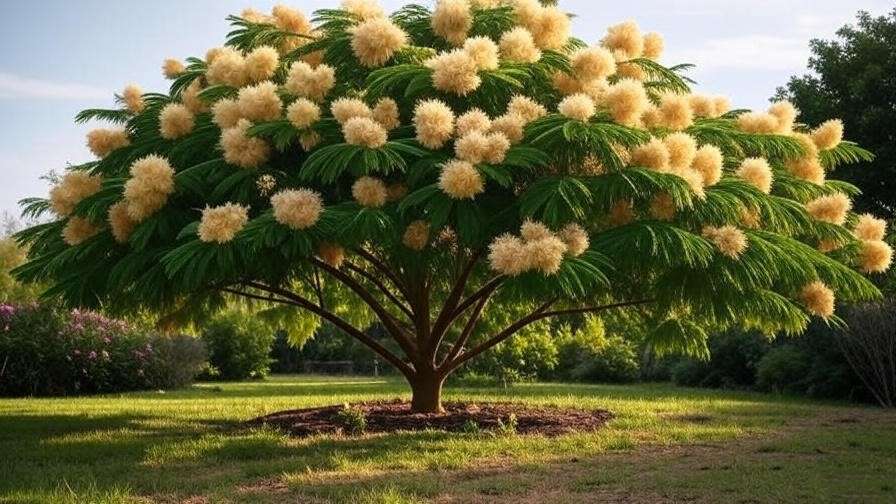
8. Desert Cassia (Senna polyphylla)
This compact tree offers bright yellow flowers and a low-maintenance profile, perfect for small, dry gardens.
- Key Features: Grows 8–12 feet, USDA zones 9–11, drought-resistant.
- Care Tips: Plant in full sun with minimal watering. Prune lightly to shape. Watch for spider mites.
- Best For: Small spaces and desert landscapes.
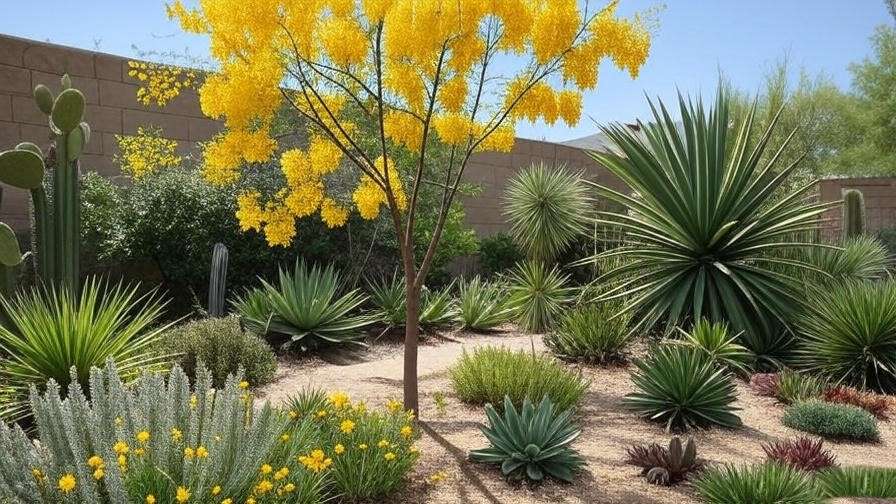
9. Yellow Elder (Tecoma stans)
A pollinator magnet, Yellow Elder produces vibrant yellow trumpet flowers and thrives in warm climates with a long bloom season.
- Key Features: Grows 10–20 feet, USDA zones 8–11, attracts hummingbirds. 🐦
- Care Tips: Prune to encourage bushier growth. Fertilize in spring and ensure good drainage.
- Best For: Pollinator gardens and sunny yards.
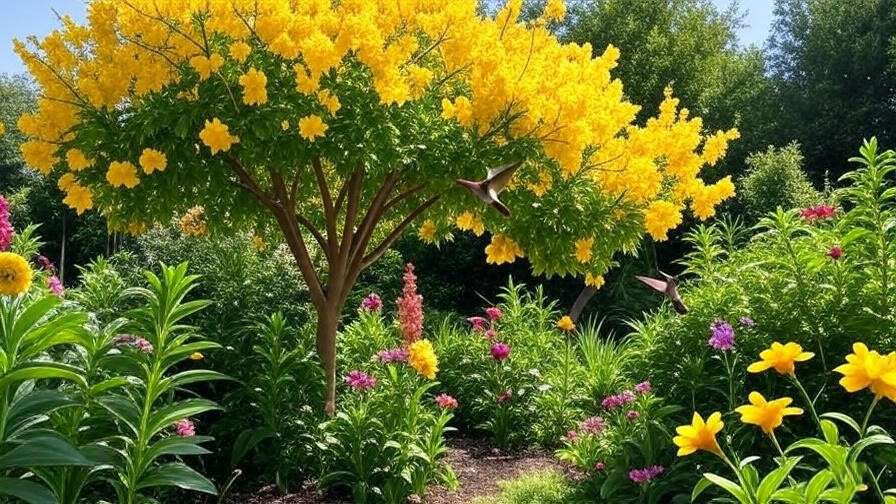
10. Flowering Maple (Sophora secundiflora)
This slow-growing tree offers clusters of yellow blooms and evergreen foliage, ideal for low-maintenance landscapes.
- Key Features: Grows 10–15 feet, USDA zones 7–10, drought-tolerant.
- Care Tips: Plant in well-drained soil with moderate watering. Protect from harsh winters.
- Best For: Compact, low-maintenance gardens.
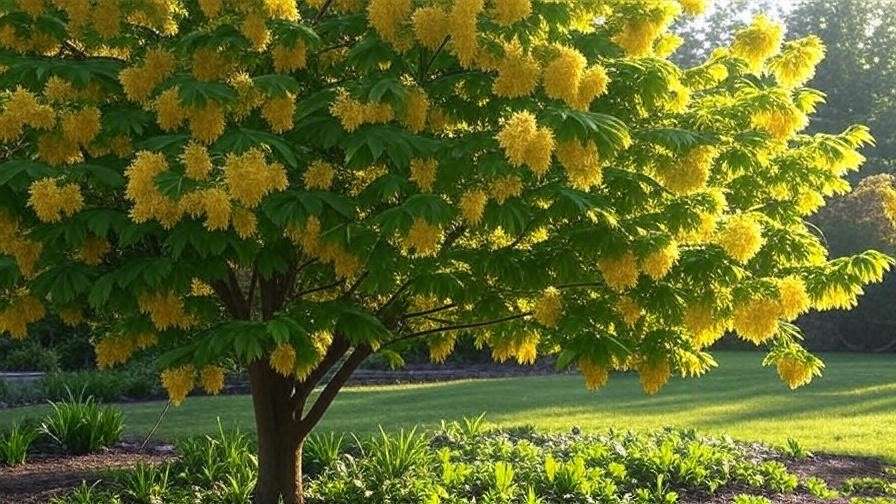
How to Choose the Right Yellow-Flowering Tree for Your Garden 🌱
Selecting the perfect tree requires careful consideration of your environment and goals. Here’s how to make an informed choice:
Consider Your Climate and Hardiness Zone
Match your tree to your USDA hardiness zone to ensure it thrives. For example, Cornelian Cherry is ideal for colder zones (4–8), while Tabebuia suits tropical zones (9–11). Check your local climate for temperature and frost patterns.
Assess Your Space and Soil
Evaluate your garden’s size and soil type. Small yards benefit from compact trees like Desert Cassia, while larger spaces can accommodate Yellow Buckeye. Test soil drainage and pH—Palo Verde thrives in sandy soils, while Yellow Buckeye prefers loamy, fertile ground.
Match Trees to Your Aesthetic Goals
Decide if you want a focal point (Golden Chain Tree), shade (Mimosa), or privacy screen (Yellow Elder). Consider growth habits—cascading blooms vs. upright forms—and pair with complementary plants for a cohesive look.
Plan for Maintenance Needs
Low-maintenance options like Palo Verde suit busy gardeners, while Golden Chain Tree requires more pruning and care. Factor in time, budget, and willingness to manage pests or seasonal tasks.
Expert Care Tips for Thriving Yellow-Flowering Trees 🌞
Proper care ensures your trees flourish and bloom vibrantly. Follow these expert tips:
Planting Guidelines
Plant in spring or fall for optimal root establishment. Dig a hole twice as wide as the root ball, mix in compost, and water thoroughly. Stake young trees like Golden Trumpet to prevent wind damage.
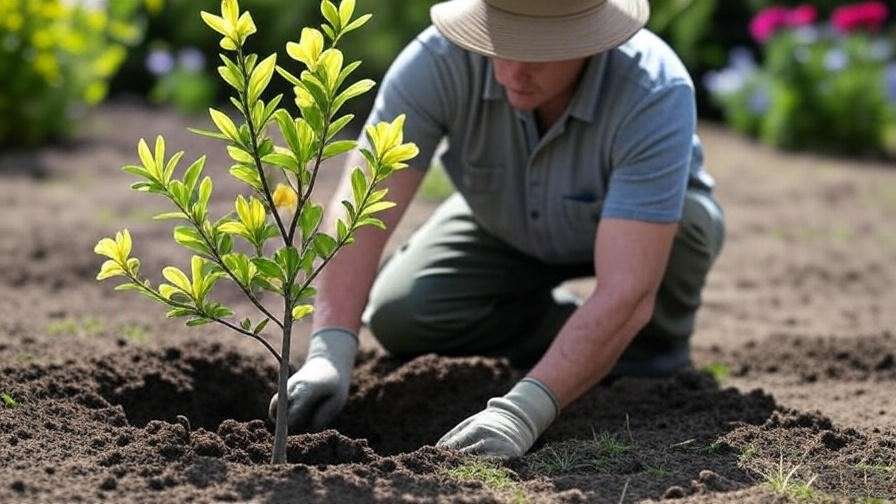
Watering and Fertilization
Water young trees weekly until established, then reduce to biweekly for most species. Use a balanced fertilizer (10-10-10) in spring to boost blooms. Avoid over-fertilizing, which can reduce flowering.
Pruning and Maintenance
Prune after flowering to shape trees and remove dead wood. For example, trim Golden Chain Tree in summer to encourage next year’s blooms. Regularly check for suckers or invasive growth in Mimosa trees.
Pest and Disease Management
Common pests include aphids (Yellow Elder) and spider mites (Desert Cassia). Use neem oil or insecticidal soap for organic control. Prevent powdery mildew by ensuring good air circulation and avoiding overhead watering.
Design Ideas for Incorporating Yellow-Flowering Trees 🌳
Yellow-flowering trees can transform your garden’s design. Here are creative ideas:
Creating a Pollinator Haven
Pair Yellow Elder with lavender or salvia to attract bees and hummingbirds. Plant near water features for a wildlife-friendly oasis. These combinations boost biodiversity and garden beauty.
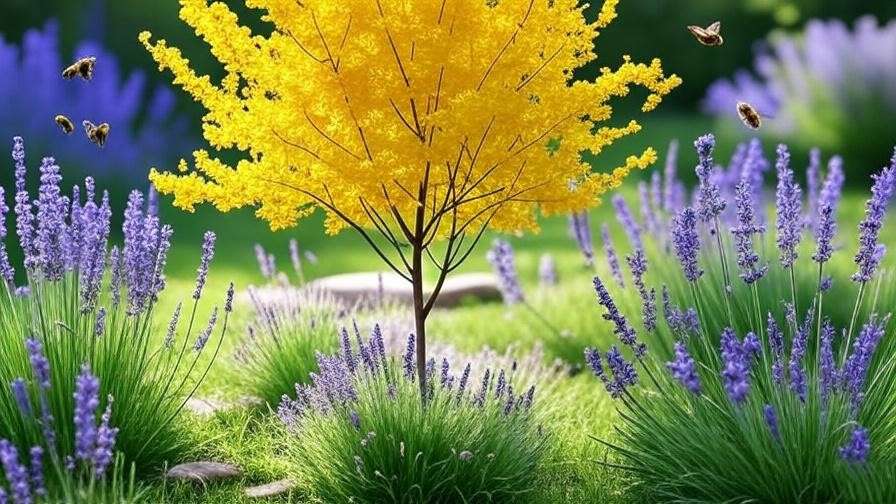
Building a Focal Point
Use Golden Chain Tree or Tabebuia as a centerpiece in a circular garden bed. Surround with low-growing perennials like marigolds to enhance the yellow theme.
Seasonal Color Planning
Combine trees with staggered bloom times, like Cornelian Cherry (early spring) and Mimosa (summer), for year-round color. Add evergreens for winter structure.
Expert Insight: Landscape designer Jane Doe says, “Yellow-flowering trees create a focal point that draws the eye. Pair them with contrasting colors like purple or blue for maximum impact.”
Common Mistakes to Avoid When Growing Yellow-Flowering Trees 🚫
- Overwatering: Ensure proper drainage to prevent root rot, especially for Palo Verde and Desert Cassia.
- Ignoring Hardiness Zones: Planting Tabebuia in cold climates leads to failure. Always check zone compatibility.
- Neglecting Pruning: Skipping pruning on Mimosa can lead to uncontrolled growth.
- Overlooking Invasiveness: Mimosa can spread aggressively; use root barriers or choose non-invasive alternatives like Yellow Elder.
FAQs About Trees with Yellow Flowers ❓
Q1: What are the best yellow-flowering trees for small gardens?
A: Desert Cassia and Cornelian Cherry are compact and low-maintenance, growing under 20 feet with vibrant blooms.
Q2: Are yellow-flowering trees safe for pets?
A: Avoid Golden Chain Tree, as its seeds are toxic. Safer options include Yellow Elder and Palo Verde.
Q3: How can I encourage more blooms on my tree?
A: Ensure full sun, prune after flowering, and fertilize with phosphorus-rich fertilizer in spring.
Q4: Which yellow-flowering trees are drought-tolerant?
A: Palo Verde and Desert Cassia thrive with minimal water, ideal for arid climates.
Q5: Can yellow-flowering trees grow in shade?
A: Yellow Buckeye and Cornelian Cherry tolerate partial shade, but most prefer full sun for optimal blooms.
Conclusion
Trees with yellow flowers bring joy, color, and life to any garden. From the cascading blooms of the Golden Chain Tree to the drought-tolerant Palo Verde, there’s a perfect option for every space and climate. By choosing the right tree and following our expert care tips, you’ll create a stunning, pollinator-friendly landscape that thrives for years. 🌿 Share your favorite yellow-flowering tree in the comments or explore more plant care tips on our website. Let’s make your garden a golden masterpiece! 🌞

